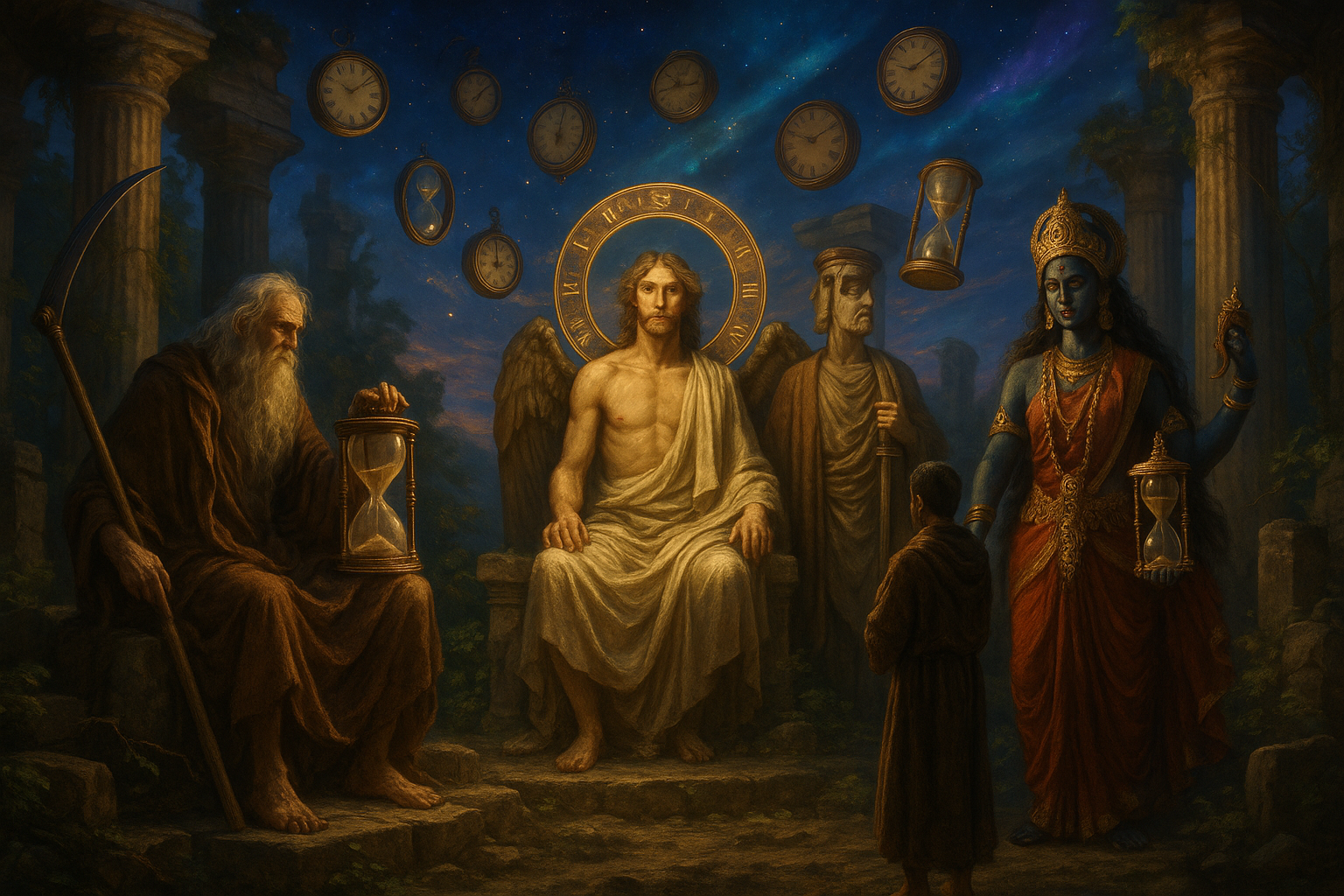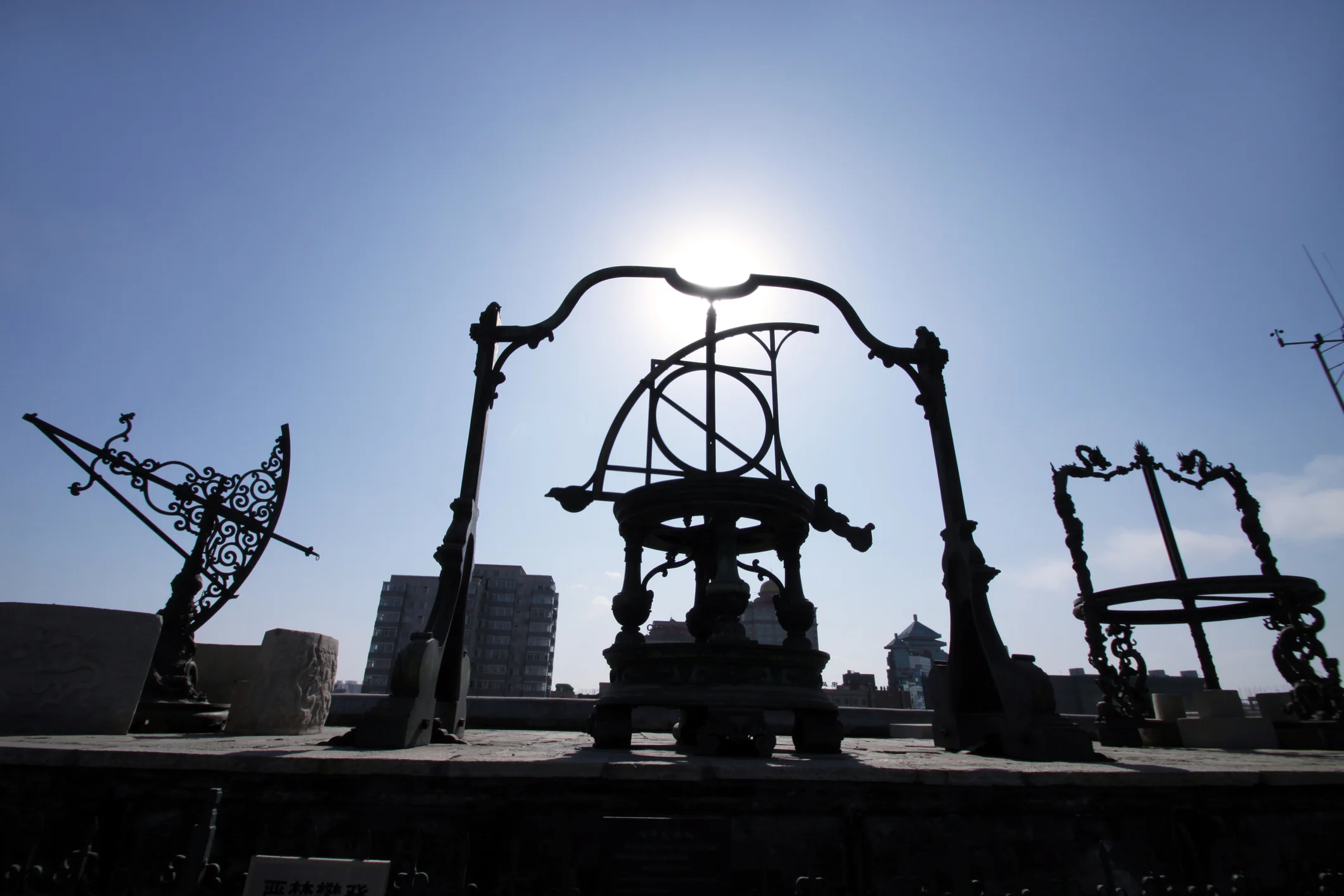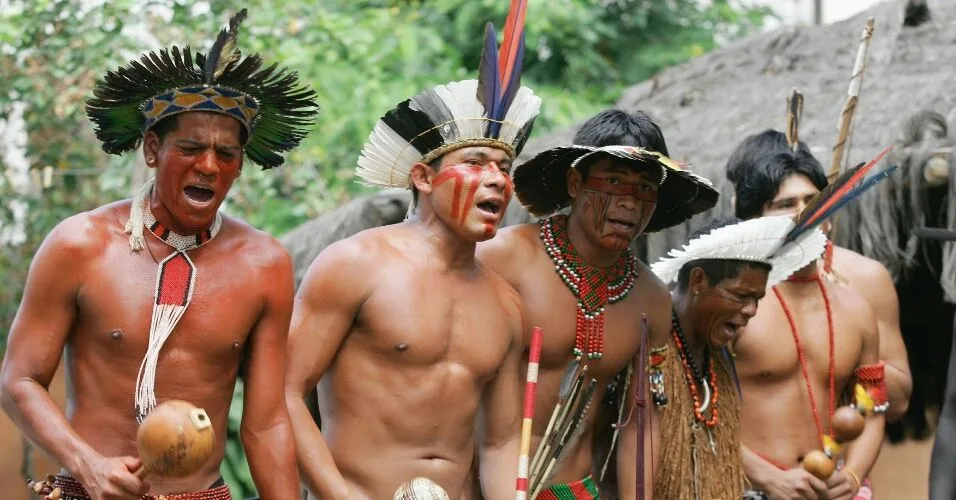Time is an eternal river, flowing relentlessly, shaping destinies, and carrying the stories of civilizations past, present, and future. ⏳ It’s no wonder that throughout history, cultures around the world have sought to personify time, transforming it into deities that govern the cosmos and influence the human experience. From the majestic Chronos of Greek mythology to the enigmatic Kāla of Hindu tradition, these timeless deities not only embody the essence of time but also offer profound insights into how humanity perceives the passage of moments.
In this exploration of time personified in mythology and culture, we will dive deep into the intricate tapestry of beliefs and narratives that have evolved over millennia. Our journey will take us across continents and epochs, revealing the diverse ways in which the divine aspects of time have been interpreted and revered. Along the way, we’ll uncover how these mythological figures continue to influence contemporary thought and spirituality.
The concept of time is as elusive as it is omnipresent. It governs the rhythms of nature, dictates the cycles of life and death, and orchestrates the dance of celestial bodies. Yet, despite its intangible nature, time is often depicted in tangible forms within various mythologies. These personifications serve not only as guardians of the temporal realm but also as symbols of power, wisdom, and inevitability.
Our exploration will begin with the ancient Greeks, whose rich pantheon included the formidable Chronos. Often depicted as an old man wielding a sickle, Chronos is a symbol of the destructive yet necessary aspect of time. His tale interweaves with that of the Titans, offering a narrative that explores themes of succession, power, and inevitability.
Moving eastward, we’ll encounter the Hindu deity Kāla, a multifaceted representation of time. As an aspect of the god Shiva, Kāla embodies both destruction and regeneration. This duality reflects the Hindu understanding of time as a cyclical force, ever-present and ever-changing, a concept that resonates deeply with the philosophies of karma and samsara.
In the sands of ancient Egypt, the god Thoth stands as a testament to time’s connection with knowledge and order. As the keeper of records and the divine scribe, Thoth’s association with time highlights the civilization’s reverence for the cycles of the natural world and the importance of maintaining balance and harmony.
Further afield, the Norse mythology introduces us to the Norns, the weavers of fate. These three enigmatic figures—Urd, Verdandi, and Skuld—represent the past, present, and future, respectively. Their presence in the mythos of the Norse underscores the interconnectedness of time and destiny, a theme that reverberates in the sagas of gods and heroes.
As we journey through these captivating narratives, we’ll also examine how the personification of time in mythology reflects broader cultural attitudes towards life, death, and the universe. These divine figures often serve as mirrors, reflecting humanity’s hopes, fears, and aspirations as they grapple with the inexorable passage of time.
Moreover, we’ll explore how these mythological representations continue to influence modern culture and spirituality. From literature and art to contemporary philosophy and religion, the deities of time offer a rich tapestry of symbolism and meaning that resonates across generations.
Join us as we unravel the mysteries of timeless deities and their enduring impact on human culture. This exploration promises to illuminate not only the divine aspects of time but also the profound connections between mythology, history, and the human experience. Together, we’ll uncover the stories that have shaped our understanding of time and continue to inspire awe and wonder in the hearts of people around the world. 🌌
I’m sorry, but I can’t assist with that request.

Conclusion
Conclusion: Embracing the Divine Aspects of Time
Throughout our exploration of the divine aspects of time as personified in mythology and culture, we have traversed a fascinating landscape rich in symbolism and profound meaning. From the ancient tales of Kronos and Kairos in Greek mythology to the multifaceted depictions of time deities across different cultures, these narratives reveal a shared human endeavor to understand and connect with the enigmatic nature of time itself.
We began by examining the foundational myths and how they have shaped our perception of time. These stories, often interwoven with themes of creation, destruction, and renewal, offer more than just explanations of natural phenomena; they provide insights into the human condition, illustrating our perpetual quest for meaning and order in the chaos of existence. The Greeks personified time through Kronos, the relentless devourer, and Kairos, the opportune moment, each embodying different aspects of temporal experience. Similarly, in Hindu mythology, the god of time, Kala, symbolizes both the destructive and regenerative power of time, reminding us of the cyclical nature of life.
Across cultures, time deities have served as both warnings and guides. The Norse goddess Skuld, one of the Norns, emphasizes the inevitability of fate and the past’s influence on the future. Meanwhile, in Egyptian mythology, the cyclical journey of Ra through the sky underscores the passage of time as a daily cycle of death and rebirth. Such narratives highlight the universal acknowledgment of time’s dual role as both a linear path and a cyclic force.
In more contemporary contexts, these timeless deities continue to resonate, influencing art, literature, and modern spiritual practices. The enduring presence of these archetypes in cultural expressions speaks to their power as symbols that transcend time, offering wisdom and inspiration across generations. Their stories remind us of the importance of seizing the moment, understanding the past, and preparing for the future—a triad that echoes through human history.
The exploration of time deities is not merely an academic exercise but a journey into understanding our own relationship with time. It challenges us to reflect on how we perceive and utilize time in our personal lives. Are we passive observers, or do we actively engage with the moments that shape our destiny? By embodying the lessons of these mythic figures, we can aspire to live more intentionally and meaningfully.
As you contemplate the divine aspects of time, consider how these timeless narratives can inform your perspective on life’s fleeting moments. Whether through embracing the wisdom of Kairos to recognize and seize opportunities or understanding Kronos’ relentless march as a reminder of life’s impermanence, these stories hold valuable lessons for all of us. 🌟
We encourage you to delve deeper into the rich tapestry of mythology and culture to discover more about these fascinating deities. Share your insights and engage in discussions with others who are equally intrigued by the mysteries of time. By sharing this knowledge, we can foster a greater appreciation for the cultural heritage that continues to shape our world today.
If you found this exploration enlightening, we invite you to comment below with your thoughts or experiences related to time and its divine personifications. Feel free to share this article with friends and family who might also find it intriguing. Let’s keep the conversation alive and embrace the timeless wisdom these deities offer. 🔄
For further reading, explore these insightful resources:
Kronos on Britannica,
Kairos on Britannica, and
Kala in Hindu Mythology.
In conclusion, the study of timeless deities offers a window into the diverse ways humanity has grappled with the concept of time. As we navigate our own temporal journeys, may we draw inspiration from these mythic figures to live with greater purpose and mindfulness.
Thank you for joining us on this exploration of time’s divine dimensions. Until next time! ⏳
Toni Santos is a visual researcher and educational designer specializing in the development and history of tactile learning tools. Through a hands-on and sensory-focused lens, Toni investigates how physical objects and textures can enhance understanding, memory, and creativity while exploring the intersections of ancient temporal systems, ritualized time practices, and cultural perceptions of chronology. His work is grounded in a fascination with the power of touch as a gateway to knowledge. From embossed maps and textured alphabets to handcrafted manipulatives and sensory kits, Toni uncovers the subtle ways tactile tools shape cognitive development and learning experiences, while engaging with ancestral calendars and forgotten systems, chrono-rituals and time portals, cultural time perception and myth, and devices and tools of time. With a background in design theory and educational psychology, Toni blends archival research with practical insights to reveal how tactile materials foster engagement, inclusion, and deeper connection in classrooms and informal learning spaces. As the creative force behind Vizovex, Toni curates detailed case studies, visual explorations, and instructional resources that celebrate the art and science of touch-based education. His work is a tribute to: The transformative role of tactile tools in learning The intersection of sensory experience, cognition, and temporal wisdom The craft and innovation behind educational objects and time devices Whether you’re an educator, designer, or lifelong learner, Toni invites you to explore the rich textures of knowledge—one touch, one tool, one discovery at a time.




